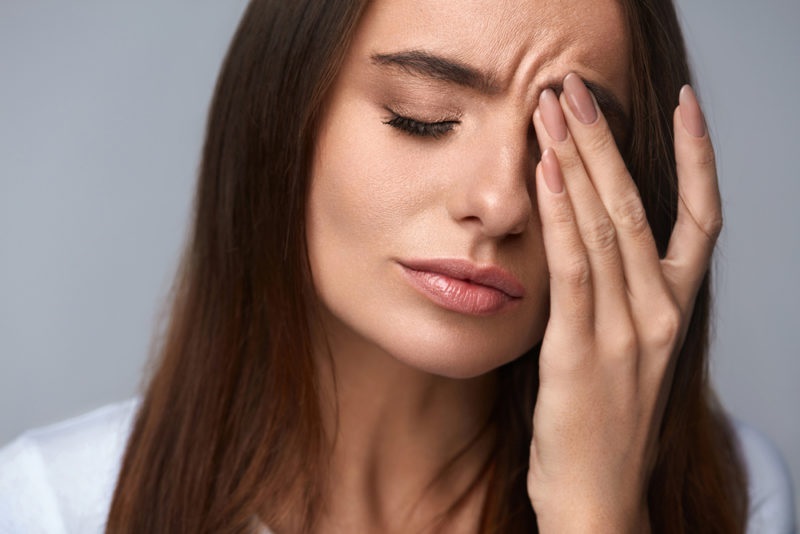Ocular pressure, or intraocular pressure (IOP), plays a crucial role in maintaining eye health by preserving the shape and functionality of the eye. However, when ocular pressure becomes elevated, it can lead to serious complications, most notably glaucoma, a leading cause of irreversible vision loss worldwide. This article explores how high ocular pressure impacts your vision and provides actionable steps to prevent and manage it effectively.
Understanding Ocular Pressure
What is Ocular Pressure?
Ocular pressure is determined by the balance between the production and drainage of aqueous humor, a clear fluid inside the eye. This fluid nourishes the eye and maintains its shape. When this balance is disrupted, ocular pressure can rise, potentially leading to damage to the optic nerve.
- Normal Range: IOP typically ranges between 10-21 mmHg.
- Measurement Tools: Tonometry is the standard diagnostic tool for assessing IOP.
Causes of Elevated Ocular Pressure
- Overproduction of Aqueous Humor: The eye produces more fluid than it can drain.
- Impaired Drainage: Blockages in the trabecular meshwork or Schlemm’s canal hinder fluid outflow.
- Systemic Health Conditions: Diabetes, hypertension, and cardiovascular issues can increase IOP.
How Ocular Pressure is Regulated
The eye’s drainage system—primarily the trabecular meshwork and Schlemm’s canal—is critical for maintaining normal IOP. Any disruption in these pathways can lead to fluid buildup and elevated pressure.
The Impact of High Ocular Pressure on Vision
How Elevated IOP Affects the Eye
- Pressure on the Optic Nerve: Increased IOP compresses the optic nerve, leading to damage over time.
- Reduced Blood Flow: Elevated pressure impedes oxygen and nutrient delivery to the optic nerve.
- Cumulative Damage: Gradual loss of nerve fibers results in vision impairment.
Symptoms of High Ocular Pressure
High IOP is often asymptomatic in the early stages, making regular screenings essential. In advanced stages, you may experience:
- Blurred vision.
- Halos around lights.
- Eye pain or discomfort.
High Ocular Pressure and Glaucoma
- Primary Open-Angle Glaucoma (POAG): The most common type, characterized by slow progression and a lack of early symptoms.
- Angle-Closure Glaucoma: A sudden blockage of the drainage angle, causing rapid IOP increase and requiring immediate medical attention.
- Normal-Tension Glaucoma: Optic nerve damage occurs despite normal IOP levels, often due to poor blood flow.
Long-Term Consequences of Untreated High Ocular Pressure
Progressive Vision Loss
High IOP leads to gradual peripheral vision loss, a hallmark of glaucoma. Without treatment, it can progress to total blindness.
Increased Risk of Retinal Detachment
Sustained high IOP weakens the retina, increasing the likelihood of detachment, a sight-threatening condition.
Impact on Quality of Life
Vision loss affects daily activities like reading, driving, and recognizing faces, significantly reducing independence and emotional well-being.
Who is at Risk for High Ocular Pressure?
Demographic Risk Factors
- Age: Risk increases significantly after age 40.
- Ethnicity: African, Asian, and Hispanic populations have a higher prevalence of glaucoma.
Genetic Predisposition
- A family history of glaucoma increases the likelihood of elevated IOP and optic nerve damage.
Lifestyle and Systemic Factors
- Sedentary habits, smoking, and obesity contribute to higher IOP.
- Chronic conditions like diabetes and hypertension further elevate risk.
Medication-Induced High IOP
- Long-term use of corticosteroids, whether topical, oral, or inhaled, can raise IOP.
Diagnosing and Monitoring High Ocular Pressure
Comprehensive Eye Exam
Regular eye exams are crucial for detecting high IOP early. Recommendations:
- Every 2-4 years for individuals aged 40-60.
- Annually for those over 60 or with risk factors.
Key Diagnostic Tests
- Tonometry: Measures the pressure inside the eye.
- OCT (Optical Coherence Tomography): Provides detailed images of the optic nerve and retina.
- Visual Field Testing: Identifies peripheral vision loss.
Importance of Baseline IOP Readings
Establishing a baseline helps identify changes over time and assess glaucoma progression risk.
Managing and Treating High Ocular Pressure

Lifestyle Changes
- Exercise: Moderate activities like walking and yoga help lower IOP.
- Nutrition: A diet rich in antioxidants, leafy greens, and omega-3s supports eye health.
- Stress Reduction: Practices like meditation and mindfulness prevent IOP spikes.
Medical Treatments
- Prescription Eye Drops:
- Prostaglandin analogs to increase fluid outflow.
- Beta-blockers to reduce fluid production.
- Oral Medications: Reserved for severe cases where drops are insufficient.
Advanced Interventions
- Laser Therapy:
- Selective Laser Trabeculoplasty (SLT) enhances drainage with minimal side effects.
- Surgical Options:
- Trabeculectomy or minimally invasive glaucoma surgeries (MIGS) to create new drainage pathways.
Adherence to Treatment Plans
Consistent use of prescribed treatments and regular follow-ups are essential to prevent vision loss.
Preventing High Ocular Pressure and Glaucoma
Regular Eye Exams
Screenings are vital for detecting elevated IOP and early glaucoma signs.
Maintaining Overall Eye Health
- Stay hydrated and avoid smoking.
- Protect eyes from UV exposure with sunglasses.
Early Intervention
Proactive management of borderline IOP levels can prevent progression to glaucoma.
Advances in Research and Technology
Innovative Diagnostic Tools
- Continuous IOP monitoring devices for real-time tracking.
- High-resolution imaging for early detection of optic nerve changes.
Emerging Therapies
- Sustained-release drug delivery systems improve medication adherence.
- Neuroprotective agents focus on preserving optic nerve function.
Genetic Studies and Personalized Medicine
- Genetic markers enable tailored glaucoma prevention strategies.
Conclusion
High ocular pressure is a significant risk factor for glaucoma and vision loss. Understanding its impact and adopting proactive strategies—including regular eye exams, lifestyle changes, and timely medical interventions—can protect your sight. Don’t wait for symptoms to appear; prioritize your eye health to ensure a lifetime of clear vision.


